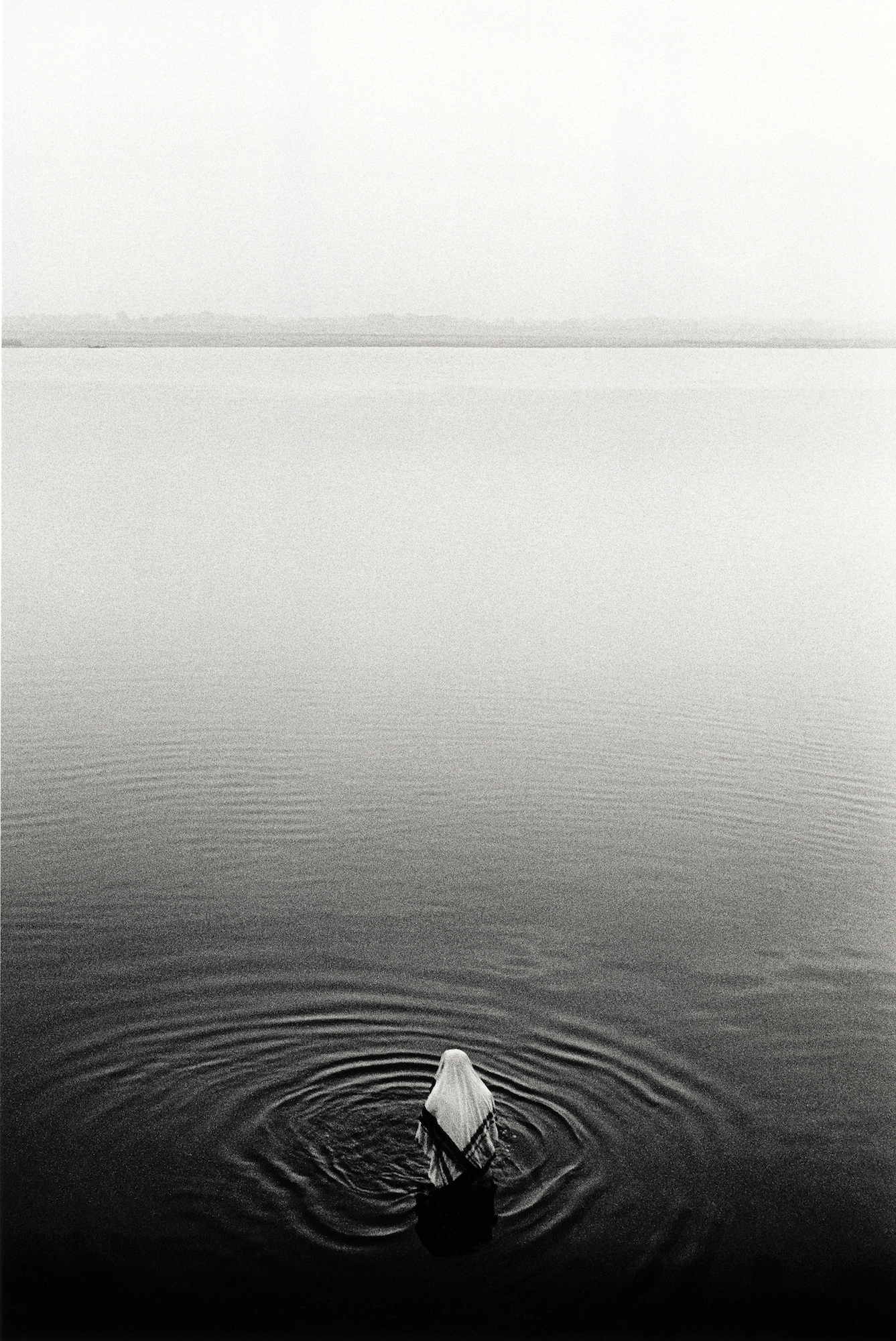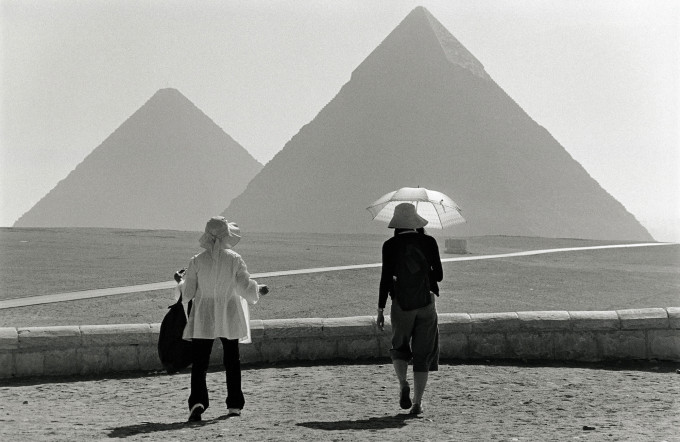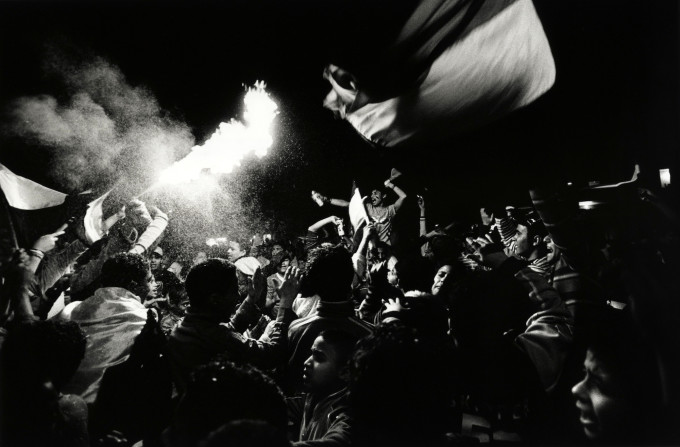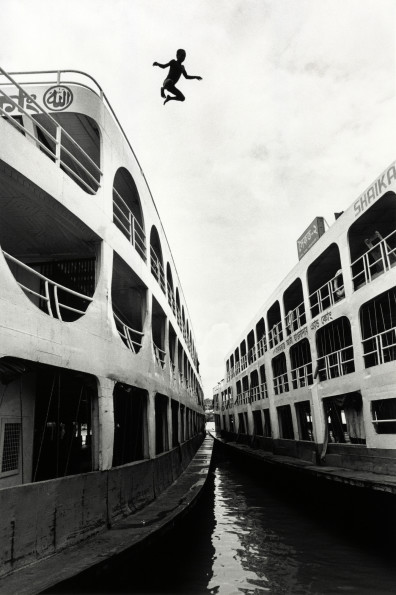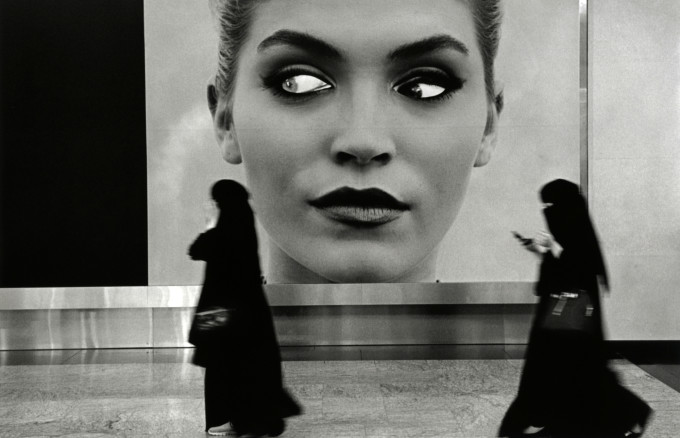All images by Walter Rothwell. Used with permission. In our previous interview with Walter, he told us about how he shoots panoramic street photos while being half blind. Here, he speaks more to the disability and how it affects his art.
Ask many photographers what’s their most important tool and they will say their eyes. Personally, I have always disagreed with this as I think the brain is the most important, but it is hard to argue with the first viewpoint. I discovered this to a huge degree early last year, my eyesight has been problematic since an accident in childhood, my left eye was sliced open by a lump of ice. That left me with partial sight in the eye and permanent double vision, I learned to ignore the second image, so although it was always there, I only really functioned with one eye. The amazing part was, I was still aware of my peripheral vision on the left, my brain had basically split the vision, ignoring what was in front but recognising signals and movement from the side. Then, early last year, things started to change.
I was photographing on the South Bank and just as I was about to take a shot a jogger collided into me from the side. I was pretty pissed off but the thing that really perturbed me was that I had no idea he was approaching. I became aware over the next few weeks that the vision was worse than usual. I thought it was just a membrane thickening where the lens used to be, it had happened before and the doctor just lasered through it. I intended to visit Moorfields eye hospital where I had treatment as a child, when a strange dark shape started to appear in my left peripheral vision; like someone holding a vinyl LP in the corner of my eye, odd.
Then it spread to the front of my vision like a dark shift, not so much odd as frightening. I went to Moorfields, it was a strange feeling walking through those corridors after 35 years. I placed my head in the eye examination machine, the nurse looked a bit shocked, called a second nurse who then called a doctor, it wasn’t a membrane, I had a detached retina. I eventually spoke with a consultant, he said they could pump gas or fluid into the eye to pressurize the retina back into place, sounded great! I asked him if there was any risk to the other eye, he said about one in six hundred cases have complications for the other eye. I replied that the problem was, if it was a lottery with those odds, I would buy a ticket. So that was my choice, risk losing the sight in both eyes to save the already damaged sight of the left. Well, it wasn’t a choice, I had to let the vision in my left eye go.
Living with partial sight in one eye for many years didn’t really prepare me for losing all vision from it, I never realised how much I depended on it. Now everything past the right hand bridge of my nose is a mystery. Nothing. For a while my face went numb in the area surrounding my left eye, it sounds stupid but I could almost feel my brain straining to see through the eye. It got to the point I couldn’t tell if my left eye was open or closed, a strange feeling in a packed train carriage or tube. The number of accidents I now have colliding with people is incredible. As we move through streets, shops and stations we all have a visual understanding. When we register someone in our peripheral vision we accommodate each other, this has become very apparent to me over the last few months. My left vision, as it was, has been replaced by a strange personal firework display. Trails of light travel through the detached retina in intricate circling displays, winding into patterns before disappearing, not all the time but unmissable when happening.
Over time I had come to cherish my strange vision, if I closed my right eye everything was reduced to fuzzy light and dark shapes, only the largest features were discernible. With the double vision it meant I always had an out of focus image sitting to the right and slightly above my normal vision. I could play with the second image, moving my eye and bringing the second image in line with the first, just to liven things up a bit! When I first started photography it felt totally natural, seeing and composing through one eye was something I had been doing for years. I felt an immediate affinity with the camera in a way I had never experienced before; something clicked, I knew I had found what I wanted to do. Over time I developed a better understanding and love for the medium, its ability to capture beautiful, humorous or poignant moments from everyday life. Seeing and thinking in terms of photographs has become as much a part of me as breathing or blinking, I can’t help it.
Through all this the main worry I had was the effect this could have on my photography, would I still see the same way? For all the faults of my previous vision, I sorely missed it.
The first few rolls I shot were developed with a certain trepidation. When I looked at the contact sheets, relief, the same as before, predominantly crap with a couple worth looking at! I’m now settling down into my new monoscopic view of the world, it’s teaching me many things, from watching out for grannies with trolleys in the supermarket to my opening sentence, I still think that the brain is the most important tool in photography, but god, do I have a new appreciation for my remaining vision.


